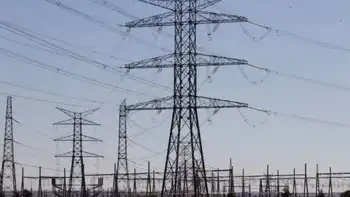GE predicts surge in Chinese sales
HONG KONG, CHINA - General Electric said recently that sales in China would rise 20 percent this year as government policies to curb pollution spurred demand for cleaner engines and power stations.
Sales are forecast to climb to more than $6 billion in China, Jeffrey Immelt, chief executive of GE, said at the Great Hall of the People in Beijing.
GE's revenue in the world's fastest- growing major economy has surged fivefold since 2001. "Our business could double again in China in the next four or five years," Immelt said after signing an agreement to help China meet environmental targets.
Immelt is tapping China, which has six of the 10 most-polluted cities in the world, to expand sales of products like wind turbines and fuel-efficient locomotives that cut emissions. China will spend 1.5 trillion yuan, or $186 billion, in the next 15 years to increase renewable energy use to 15 percent of total supply, the government said in November.
GE's clean technology agreement with China covers conversions of coal- burning plants to natural gas; wind energy; jet engines that have lower-emissions and use less fuel; efficient locomotives; and water desalination. GE gave no details of the accord with the National Development and Reform Commission, China's main economic planning body.
GE will also invest up to $50 million in "eco-related" energy research and development at its Shanghai Technology Center over the next five years. It also will provide management and leadership training to as many 2,500 Chinese managers and officials over the next five years, GE said.
"This focus is particularly appropriate in China due to its significant energy requirements and serious challenges regarding availability of natural resources," the company said.
The announcement of GE's accord with the commission came as Japan said it had signed an agreement in Tokyo to help China improve its energy efficiency. The countries signed five agreements covering information exchange, training and equipment supply, the Japanese Trade Ministry said.
GE's wind-turbine business in China is likely to be worth as much as $500 million in revenue within five years, Immelt told reporters. The company's total global sales may rise 10 percent this year, he said.
GE, the world's largest producer of turbines for power plants, is ahead of plans to sell $20 billion worth of environmentally friendly products annually by 2010, the company said recently. Immelt set the sales goal last year.
Sales of "green" products rose 63 percent to $10.1 billion last year, and orders almost doubled to $17 billion, GE said. GE almost doubled the number of products it said were less harmful to the environment to 30 in 2005 from 17 a year earlier.
GE's spending on "cleaner technologies" amounted to $700 million in 2005, almost half its goal of $1.5 billion annually by 2010, the company said. Products under development include turbines that run on methane gas.
China's push for renewable energy has created opportunities for GE and companies like Royal Dutch Shell, which said in February that the country might become its largest market for wind-power projects. BP, which produces solar cells, said this month that its Asian sales might grow 50 percent a year by 2016, from a maximum of 30 percent now, partly because of increased demand from China.
Among GE's new eco-related products are equipment that turns coal into gas to reduce pollution by power plants. Sales of that equipment should reach $1 billion annually by 2008, with the potential for $75 billion over 10 years starting in 2010, Immelt said recently.
Related News

Utilities see benefits in energy storage, even without mandates
WASHINGTON - The rankings do not tally how much energy storage a utility built or owns, but how much was connected to their system. So while IPL built and owns the storage facility in its territory, Duke does not own the 16 MW of storage that connected to its system in 2016. Similarly, while California’s utilities are permitted to own some energy storage assets, they do not necessarily own all the storage facilities connected to their systems.
Measured by energy (MWh), IPL ranked fourth with 20 MWh, and Duke Energy Ohio ranked eighth with 6.1 MWh.
Ranked by energy storage…




